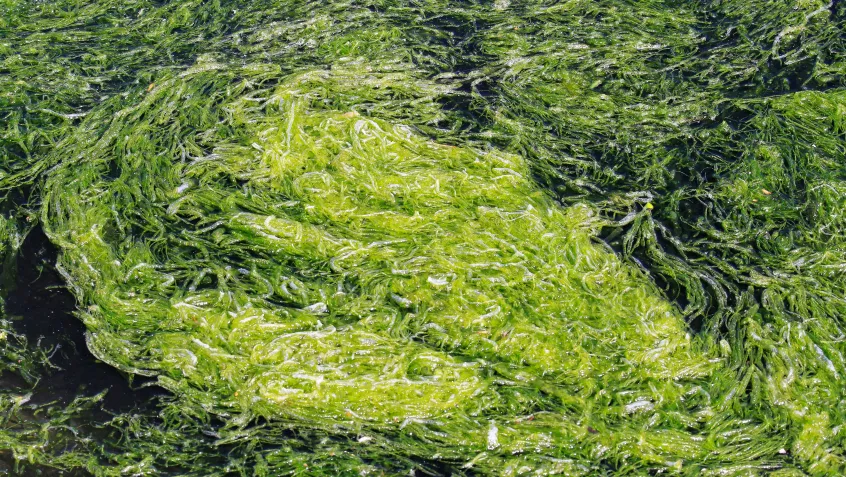
Algal blooms impact water quality and have the potential to produce toxins that can harm humans, pets, and wildlife. The blooms are caused by a combination of factors that promote high densities and reproduction of algae: high concentrations of nutrients that feed algae, like nitrogen and phosphorus, warm temperatures, sunlight, and shallow, slow-flowing water.
A changing climate could favor the global expansion of cyanobacteria (blue-green algae) through predicted changes in temperature and precipitation.
- Warmer temperatures increase the growth rate of cyanobacteria. Toxin producing cyanobacteria, such as Microcystis, grow faster in higher temperatures than other non-harmful algae. Milder winters and warmer springs also lengthen the algae growing season.
- Warmer temperatures increase thermal stratification in water. Differences in temperature and density create layers in the water column â warm water at the surface has lower density than deep, colder water. The warming of surface water accentuates this stratification and can limit the wind's ability to mix the water, reducing the movement of oxygen and nutrients throughout the water column. This favors the growth of cyanobacteria in the warm surface layer, where they can feed on nutrients and block sunlight from other algae and aquatic life.
- Larger and more intense precipitation events can fuel algal blooms by increasing the transport of nutrients into waterways via stormwater runoff.
- Severe and more frequent droughts combined with evaporation from warmer air temperatures reduce water levels, increasing salinity. High salinity can cause salt stress in cyanobacteria, leading to leakage of cells and the release of toxins into the water. Increased saltiness can also create conditions that allow marine algae to invade freshwater ecosystems.
Scientists have discovered that in warmer temperatures cyanobacteria can produce harmful algal blooms with lower concentrations of the nutrients they feed upon. Scientists have also reported the expansion of cyanobacteria into lakes that have not had an increase in nutrients, indicating that temperature can promote the geographic expansion of some species of cyanobacteria.
What You Can Do
- Give these tips a try to protect water quality where you live: Do Your Part to Protect Water Quality.
Learn More
- Protect your family and pets by learning more about the health effects of harmful algal blooms and how to protect yourself.
Sources
- Michalak, A.M. et. al 2013. Record-Setting Algal Bloom in Lake Erie Caused by Agricultural and Meteorological Trends Consistent With Expected Future Conditions. PNAS 110(16):6448-6452
- National Air and Space Administration. Algae Bloom in Lake Erie. Accessed online 13 June 2017. http://earthobservatory.nasa.gov/IOTD/view.php?id=84125
- Paerl, H.W. and V.J. Paul. 2012. Climate Change: Links to Global Expansion of Harmful Cyanobacteria. Water Research 46:1349-1363
- U.S. Environmental Protection Agency. 2013. Impacts of Climate Change on the Occurrence of Harmful Algal Blooms. Accessed online 13 June 2017. www2.epa.gov/sites/production/files/documents/climatehabs.pdf


